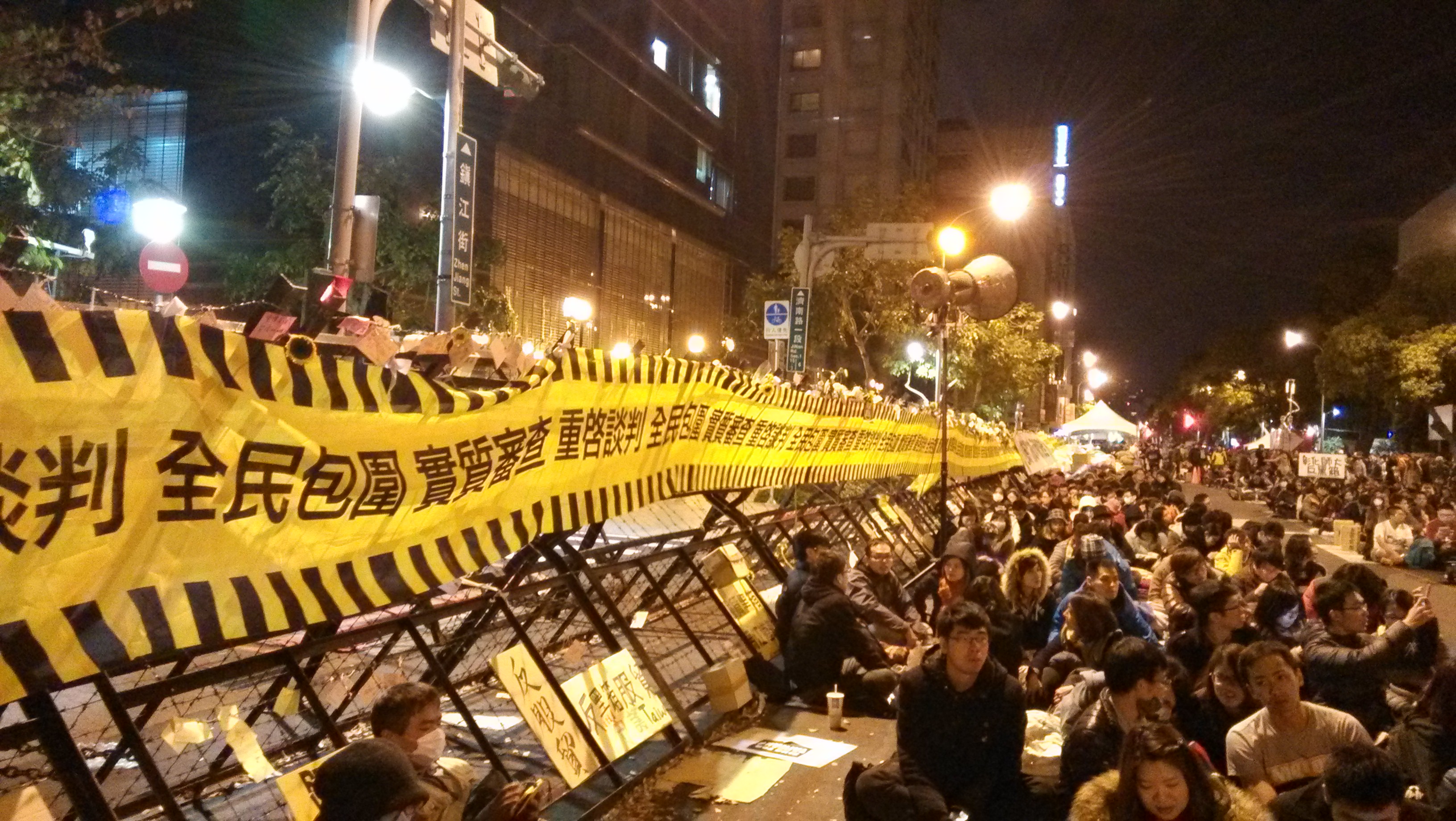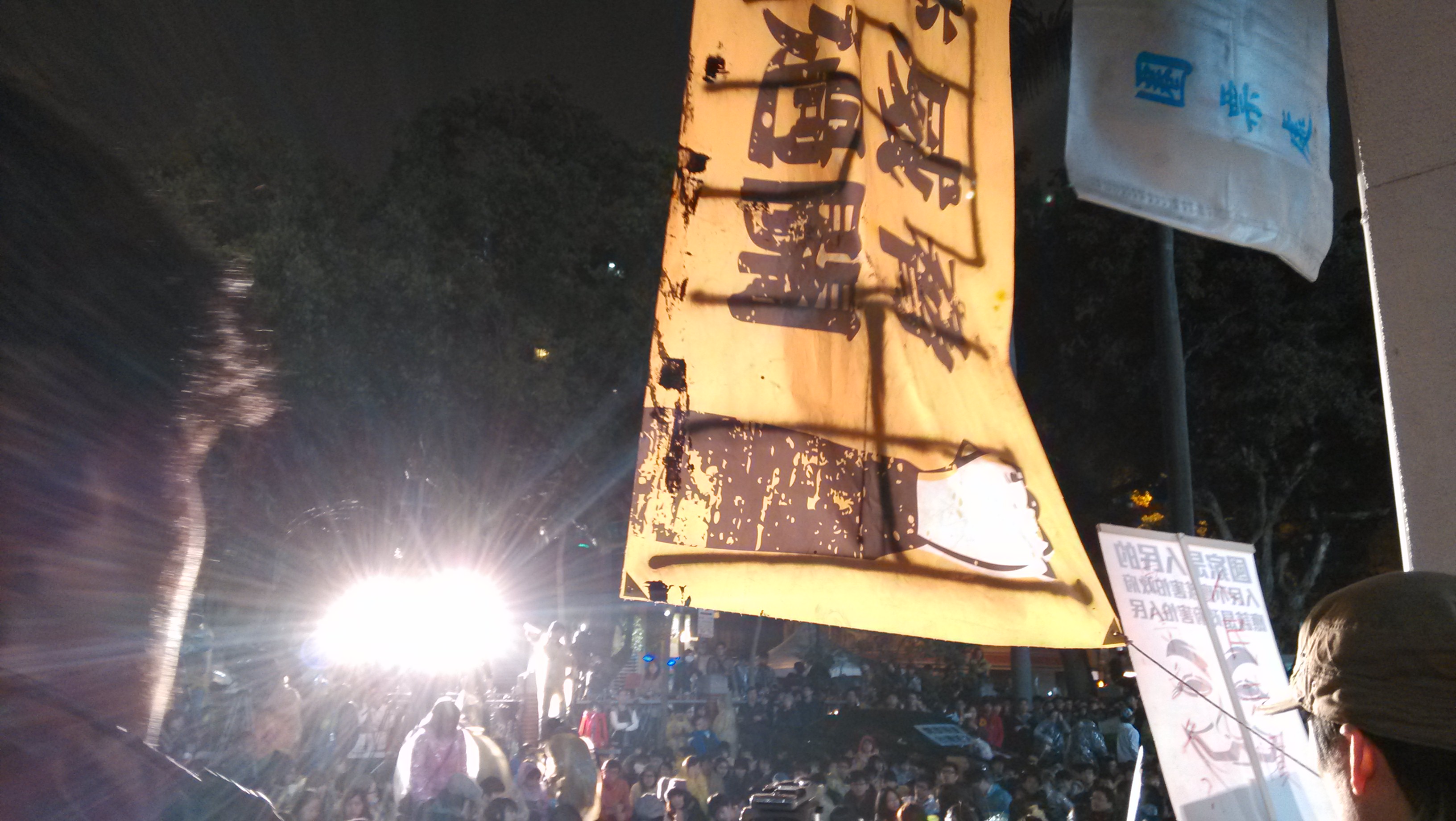by Brian Hioe
語言:
English
Photo Credit: Brian Hioe
TEN YEARS PROVES, in some ways, an awkward anniversary for the Sunflower Movement. This is in spite of that the widespread influence of the movement is recognized.
Namely, ten years is not yet a long enough time for the movement to have taken on the grandeur of distant history. And ten years is close enough that officially commemorating the movement is awkward.
There is the temptation to examine the movement in terms of concrete outcomes. In this interpretation of history, the temptation is to frame the movement as a success because the Tsai administration rode into political power in the wake of the movement. Or as having given us a generation of young people who entered politics of public life in various capacities after the movement.
Still, the verdict on the movement has changed several times. Before 2016, for example, the movement was largely viewed as a failure by its participants. It is only with increasing distance that the movement is increasingly referred to as a successful one.
 Photo credit: Brian Hioe
Photo credit: Brian Hioe
To this extent, many of the movement’s impacts are less easy to quantify. One notes that the social view of young people changed dramatically after the movement. While young people were previously bemoaned as a soft “Strawberry Generation” that differed from their hardy boomer parents, after the movement, youth were seen as willing to take risks for what they believed in–and in that way, worthy of being entrusted with Taiwan’s future.
Indeed, it has become increasingly common to speak of “national doom” regarding Taiwan’s political fate in moments of potential transition such as elections, particularly after the 2020 vote. But what is sometimes forgotten is the sense of doom–even apocalypticism–that preceded the Sunflower Movement. Without this sense of doom, there would have been little capacity to mobilize the tens of thousands, hundreds of thousands, that took to the streets of Taipei–mobilizing close to 2.5% of the Taiwanese population on March 30th, 2014. The world may not have realized this at the time, but at least in Taiwan itself, the movement reversed the sense of inevitability that one could only “say goodbye to Taiwan”–that Taiwan had already acquiesced in the face of China’s rise, and that annexation was all but inevitable.
The Sunflower Movement was, in this way, powerfully transformative for Taiwanese society even if there was relatively little international exposure of it at the time. The Sunflower Movement was largely overshadowed by the disappearance of Malaysian Airlines Flight 370 at the time in international coverage.
A decade later, this has changed. Taiwan is now discussed as a regular topic of international political discourse–even as the “most dangerous place on Earth,” as a now infamous The Economist cover termed it. But the Sunflower Movement can perhaps be seen as having put in place the groundwork for efforts to fend off China’s ambitions on Taiwan in the past decade.
But much of what remained unfinished after the movement is still unfinished. And the more things change, the more they stay the same.
A decade later, the KMT has seen successive defeats in Taiwanese elections. But even if the KMT has been unable to win the presidency in the years since then, as the KMT’s victory in the legislative races in the 2024 elections go to show, the KMT remains a viable political force.
To this extent, the rise of the TPP–as a pan-Blue political party that enjoys significant support from young people–shows the historical distance of the Sunflower Movement from the present. While the movement was highly influential on Millenials–who came to be termed the generation of “natural independence” in the wake of the movement–members of Gen Z have spent their entire political lifetimes with the DPP in power. Likewise, there may not be a perception of any genuine threat from the KMT, which has been a weak and marginalized political party for most of their political lives.
 Photo credit: Brian Hioe
Photo credit: Brian Hioe
This is not to discount the fact that views among Gen Z may shift on Ko, who has managed to position himself as the anti-establishment alternative to both the DPP and KMT. A generation that was criticized by the generation before it should not do the same to the next. And perhaps every generation needs their Chen Shui-bian or Ma Ying-jeou to become disillusioned with.
Ironically, ten years after the Sunflower Movement, the pan-Blue camp has sought to reintroduce the notion of signing the Cross-Strait Services Trade Agreement into the political discourse. This is despite that the KMT’s efforts to pass the trade agreement ten years ago provoked one of the largest social movements in Taiwanese history. Part of the reason why the idea would return in Taiwanese political discourse may simply be because the pan-Blue camp has no better political ideas at present except returning to worn-out past proposals.
But that may, too, reflect the unfinished nature of the Sunflower Movement. Though the movement came to an end in April 2014, the same fundamental issues that the movement addressed–that of Taiwan’s ambiguous position in the world and the future of its people–are still unresolved. And so, ten years is both a lifetime and the blink of an eye when it comes to Taiwan’s past and future as they intersect in a moment.

